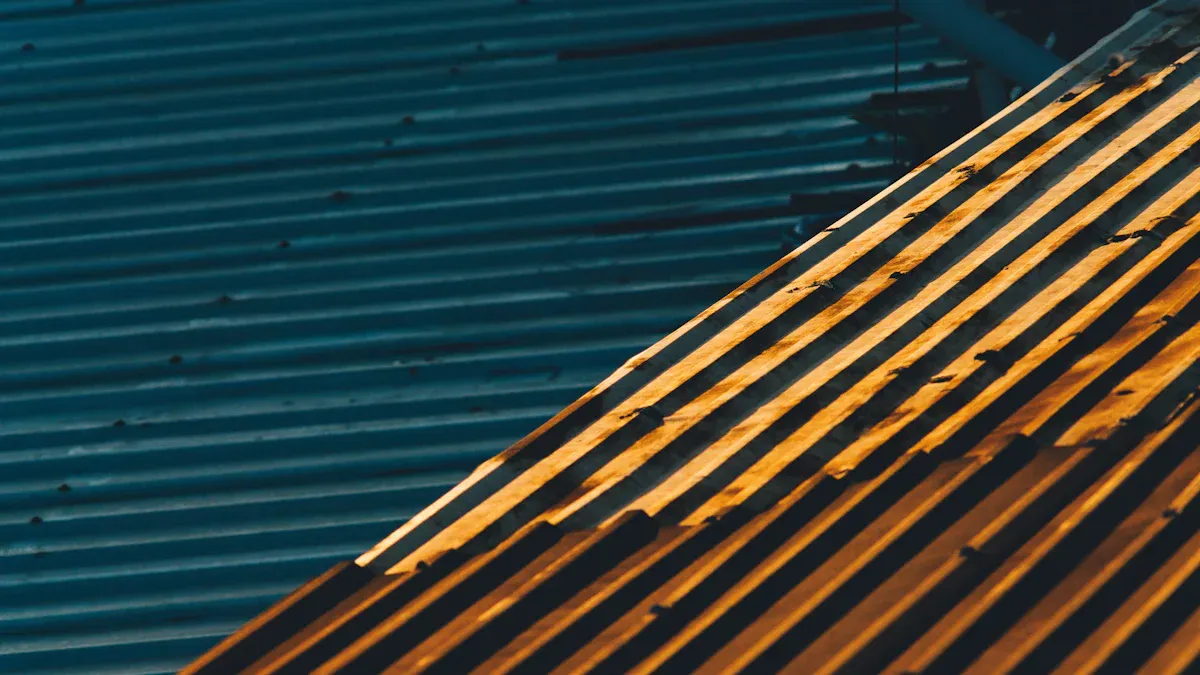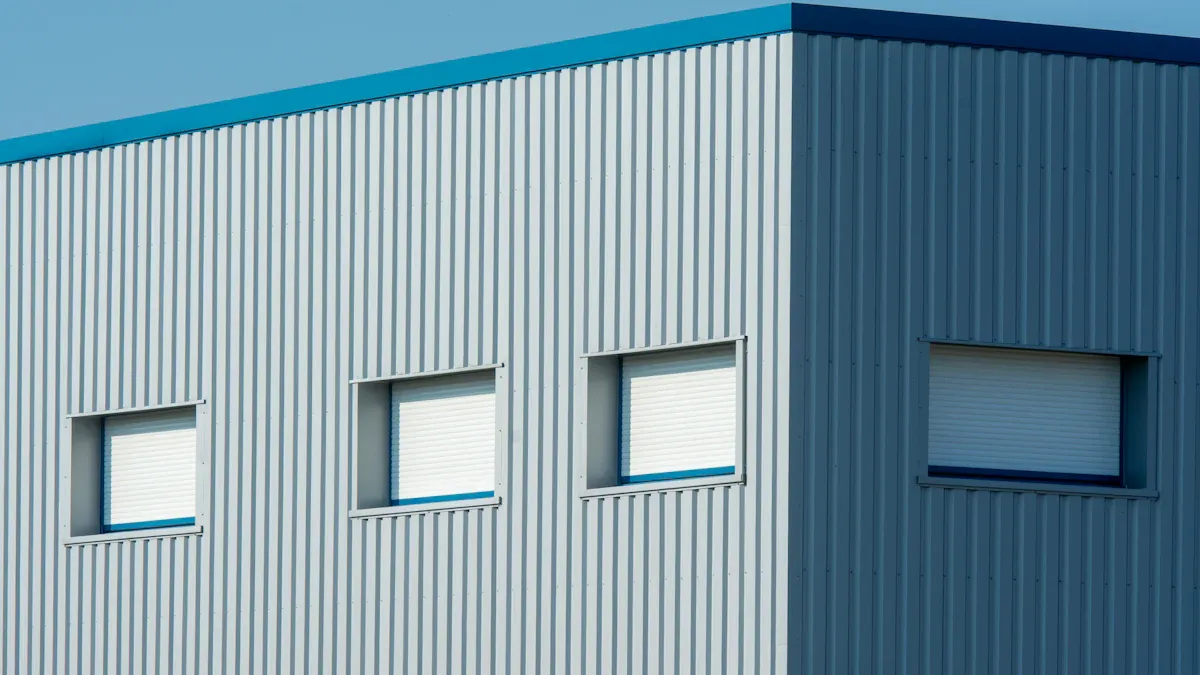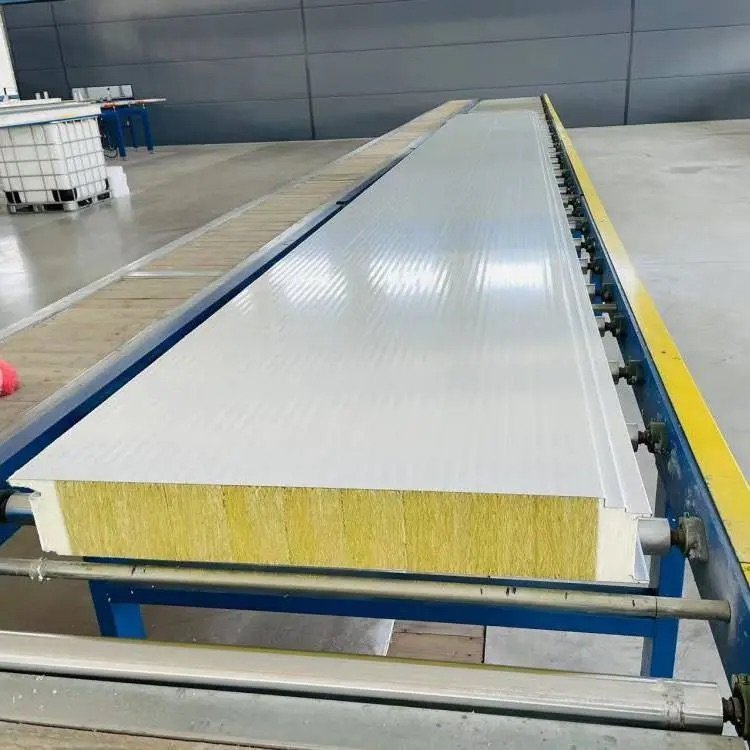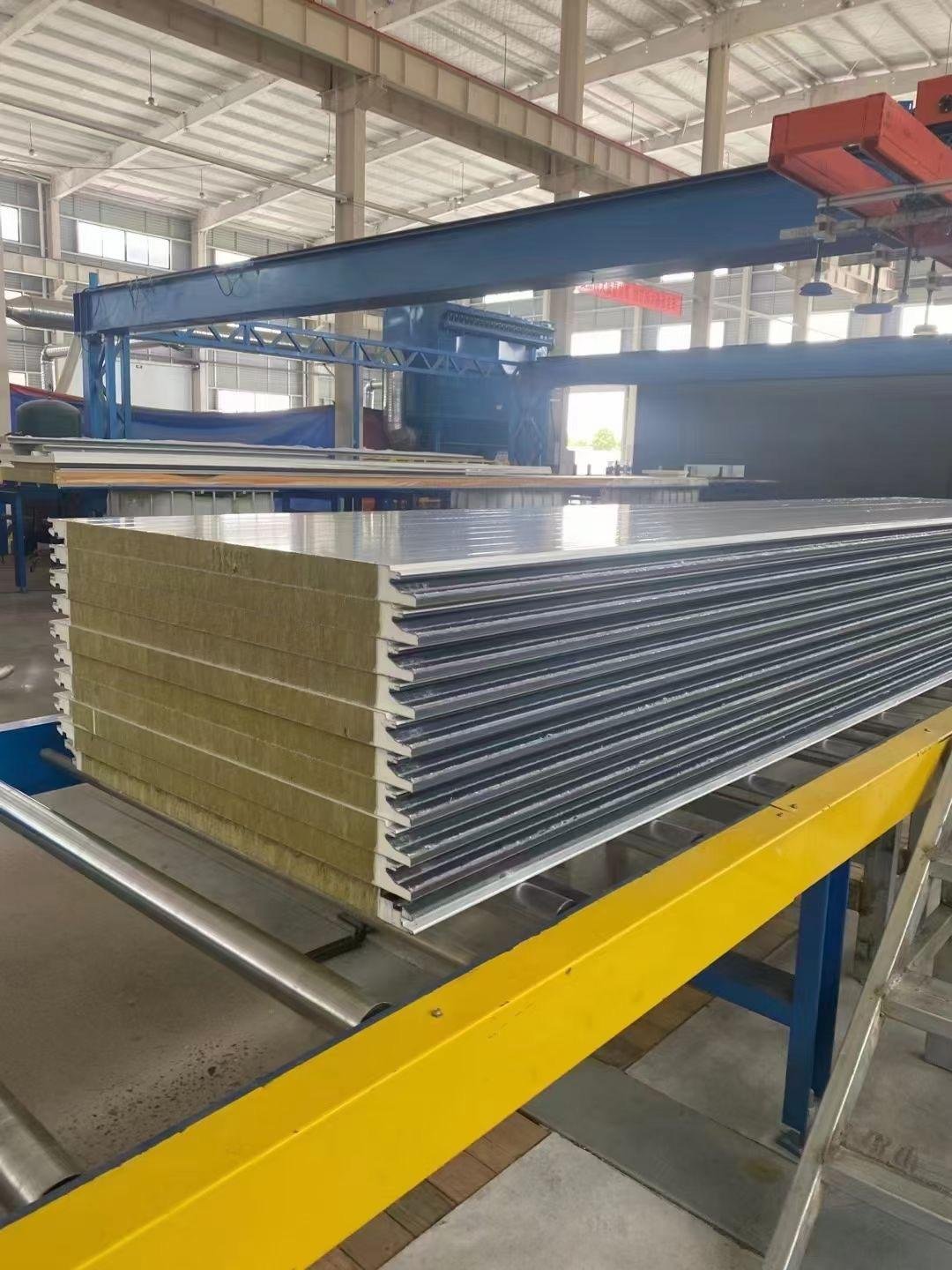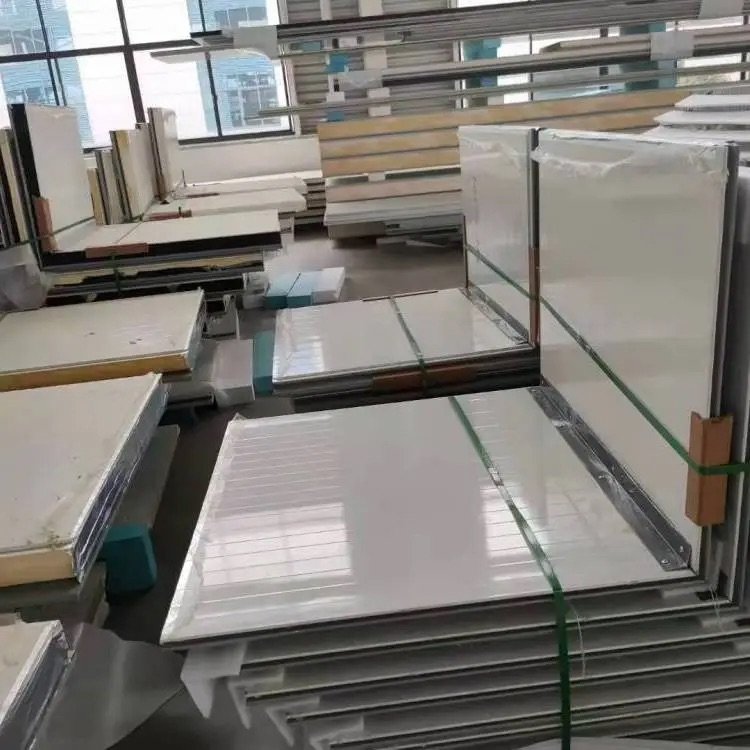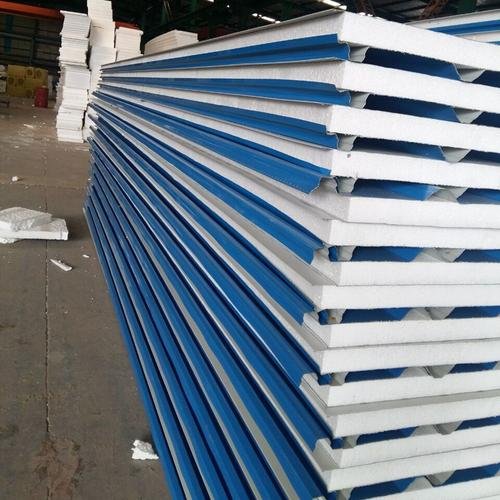
Roof sandwich panels are a useful and smart roofing option. But, ignoring design mistakes can cause big problems. You might get damage, pay more for energy, or need repairs. These panels need good planning and careful work to last long. By learning common mistakes, you can make better choices and keep your roof strong.
Fixing design mistakes saves money and makes your roof work better.
This blog will give you easy tips to avoid these problems.
Key Takeaways
Pick the right screws for roof panels to avoid rust. Stainless steel screws work well and last longer.
Use panels with high R-value for better insulation. This helps save energy and lowers your bills.
Follow the maker’s instructions when installing the panels. This keeps the roof safe and strong, avoiding repairs.
Check the roof often for damage and fix problems early. Finding issues early saves money and makes the roof last longer.
Use good materials for fixing and installing the roof. Spending on quality now avoids costly repairs later.
Material Selection Design Mistakes
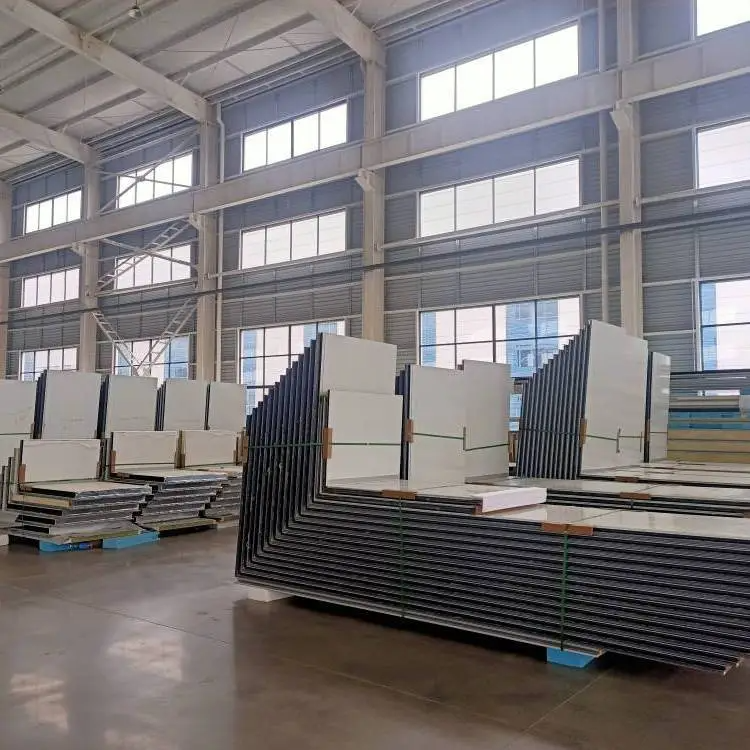
Picking the Wrong Fasteners
Fasteners hold roof sandwich panels in place. Using the wrong ones can make the roof weak and wear out fast. Make sure the fasteners match the panel’s material and coating. For instance, mixing metals can cause galvanic corrosion, which weakens the roof over time.
Follow the manufacturer’s advice for choosing fasteners. Look at the material, size, and coating. Picking the right fasteners keeps your roof strong and safe for years.
Tip: Stainless steel fasteners are strong and resist rust well.
Choosing Panels with Low R-Value
The R-value shows how well a panel insulates. Panels with low R-value waste energy and raise bills. For example, homes with high R-value panels save up to 20% more energy than wood-frame homes.
Feature | ICF Homes Save Energy | Wood-Frame Homes Save Less |
|---|---|---|
Energy Savings | 20% better | Basic level |
Temperature Changes | 1-2% per hour | 4% or more |
Pick panels with an R-value that fits your weather and energy needs. Remember, R-value tests don’t include air leaks or outside factors. Higher R-value panels keep your building warmer or cooler and save energy.
Note: Spending more on good R-value panels now saves money later on energy bills.
Using Cheap Materials
Cheap materials might seem like a good deal, but they cause problems. Good materials are key for insulation, strength, and lasting use. Bad materials can lead to leaks, poor insulation, and damage.
You can’t always tell if materials are good just by looking. That’s why buying from trusted brands is important. Picking quality materials and assembling the roof carefully avoids future issues.
Reminder: Good materials make your roof last longer. Saving money now can cost more in repairs later.
Ignoring Manufacturer Specifications
Skipping manufacturer rules is a common mistake with roof sandwich panels. These rules are not just suggestions; they are important for safety and durability. Manufacturers create these instructions after careful testing and planning. Ignoring them can weaken the entire roof system.
One big problem happens when fire safety rules are skipped. For example, not adding fire-stops in panels can make fires more dangerous. This mistake risks the building and the people inside. Also, ignoring strength rules can harm the metal layer of panels. Damaged panels don’t work well and wear out faster.
Problem Type | What Happens |
|---|---|
Fire Safety | No fire-stops in panels increases fire danger. |
Strength Issues | Metal damage makes panels less effective. |
Fire Load | Real fires can go beyond safe limits, raising risks. |
Installation Errors | Rushing or focusing on looks can cause safety problems. |
Another mistake is rushing or caring more about looks than proper setup. Cutting corners might seem faster, but it causes safety problems later. For instance, bad sealing or fastening can lead to leaks, poor insulation, and a weaker roof.
To prevent these issues, always follow the manufacturer’s rules carefully. Focus on things like where fasteners go, how to seal, and lining up panels correctly. These small steps help your roof work well and last longer.
Tip: Keep the manufacturer’s guide nearby while installing. It helps you avoid costly mistakes step by step.
Skipping these rules might save time now, but it often leads to expensive fixes later. By following the guidelines, you protect your roof and keep your building safe.
Installation Design Mistakes
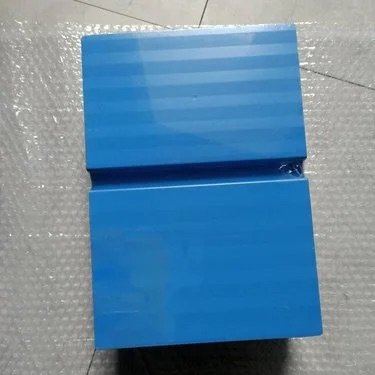
Wrong Roof Slope or Uneven Surface
The roof slope must be correct for panels to work well. If the slope is wrong or the surface is uneven, water can collect. This can cause leaks and damage the roof structure. Always check that the roof surface is flat before starting. Use tools like spacers and laser levels to align the roof properly. These tools help avoid gaps and mistakes that weaken the roof.
After installing, inspect the edges and joints of the panels. This ensures there are no gaps that could let water in or waste energy. Also, check that screws are tightened just right. Screws that are too loose or tight can make panels unstable over time.
Tip: Check the roof slope and surface before installing. Fixing small issues now avoids expensive repairs later.
Bad Ventilation Design
Good ventilation is important for keeping panels working well. Poor ventilation traps heat and moisture, which can harm the panels. Research shows unvented ceilings work better than vented ones for heat and moisture control.
Study | What They Found |
|---|---|
Dr. Neil Hutcheon | Airflow control helps manage heat and moisture. |
Anne Silberstein & Bill Rose | Unvented ceilings perform better for heat and moisture. |
Bill Rose (1998) | Vented ceilings are hotter than unvented attics. |
To fix this, design a system that allows air to flow properly. This helps control temperature and stops moisture buildup. If unsure, ask an expert to design the best ventilation for your roof.
Note: A ventilated roof saves energy and makes panels last longer.
Ignoring Thermal Expansion and Contraction
Roof panels expand and shrink with temperature changes. Ignoring this movement can cause cracks, leaks, and weak joints. Insulated metal panels (IMPs) have joints that handle this movement. These joints keep the roof sealed and stop leaks.
When installing, leave space for panels to expand and shrink. Tight installations can make panels crack or warp in changing temperatures. Always follow the manufacturer’s spacing and joint rules.
Reminder: Allowing for expansion and contraction keeps your roof strong and leak-free, even in tough weather.
Improper Sealing and Waterproofing
Sealing and waterproofing are very important for roof panels. If sealing is bad, water can get inside the panels. This causes rust, mold, and weakens the structure. Poor waterproofing also lowers insulation, wasting energy.
Always pick good-quality sealants that match the panel material. For instance, silicone-based sealants work well with metal panels. They resist weather changes and last longer. Spread the sealant evenly on edges and joints to block water.
Check the sealing after installation. Look for gaps, bubbles, or uneven spots. These problems can ruin waterproofing and cost a lot to fix. Regular checks help find and fix issues early.
Tip: Use UV-resistant sealants to stop sunlight damage and cracking.
Loose Foam-to-Foam Connections
Foam-to-foam connections keep panels strong and insulated. Loose connections leave gaps for air and water to pass through. This lowers insulation and wastes energy.
To fix this, make sure foam cores fit tightly together. Use the right adhesives to secure the connection. Follow the manufacturer’s instructions for applying these materials.
After installing, test for air leaks or temperature changes. A thermal camera can find weak spots in insulation. Fixing these quickly improves the panel’s strength and energy-saving ability.
Reminder: Tight foam connections save energy and stop water damage.
Bad Seaming Practices
Seams are where roof panels join together. Bad seaming can weaken the roof and shorten its life. Common mistakes include big seams, weak attachments, and bad soldering. These lead to leaks, stress, and other problems.
Reports show bad seaming harms roof durability:
Problem Type | What Happens |
|---|---|
Big seams cause stress and movement issues. | |
Work Errors | Weak attachments and bad soldering lead to seam failures. |
System Failures | No expansion joints cause more damage over time. |
To avoid these, use the right tools and methods for seams. Make seams tight and properly aligned. Add expansion joints to handle temperature changes and reduce stress.
Check seams often for wear or damage. Fixing problems early saves money on repairs later.
Note: Good seams make your roof last longer and work better.
Storage and Handling Design Mistakes

Taking care of roof sandwich panels is very important. Mistakes can damage them, shorten their life, and cost you money. Knowing common errors helps you protect your panels.
Bad Storage Conditions
Storing panels in bad places can ruin them. Moisture or sunlight can cause warping or rust. For example, rain can rust metal, and heat can weaken insulation.
Keep panels in a dry, shaded spot with airflow. Use pallets to lift them off the ground. Cover them with a tarp that lets air pass through to protect them.
Tip: Check the storage area often to keep it clean and dry.
Wrong Way to Stack Panels
Stacking panels the wrong way can harm them. Heavy stacks or objects can dent or bend the panels. Uneven stacks might fall and cause accidents.
Stack panels flat in small piles. Use spacers to spread the weight evenly. Label stacks clearly to make moving them easier and safer.
Reminder: Don’t stack panels higher than the maker’s limit.
Rough Handling During Moving or Setup
Handling panels roughly can break them. Reports show bad handling causes injuries and damages. Many claims come from accidents during transport or setup.
Use the right tools to lift panels safely. Don’t drag them on rough surfaces to avoid scratches. Train workers to handle panels carefully and follow safety rules.
Note: Good tools and training prevent accidents and keep panels lasting longer.
Skipping Protection During Storage
Not protecting roof sandwich panels during storage can cause damage. Panels left in bad weather may rust, warp, or lose insulation. You need to take steps to keep them safe.
A common mistake is not covering the panels. Rain can soak into the material, causing rust and weak insulation. Sunlight can also harm the coating and shorten the panel’s life. To stop this, cover panels with a breathable tarp. This cover blocks rain and sun but lets air flow, keeping panels dry.
Another problem is storing panels directly on the ground. Moisture from the ground can damage the panels. Use pallets or wooden blocks to lift them off the ground. This keeps them dry and safe from water damage.
Stacking panels the right way is also important. Tilt the stacks slightly so water runs off instead of pooling. This stops water from sitting on the panels and causing harm.
Tip: Check the storage area often to make sure it’s clean, dry, and safe.
Handling guides for insulated panels stress these safety steps. Covering panels and tilting stacks are key to protecting them. These actions keep panels safe from weather until they are installed.
By following these tips, you save money and avoid repairs. Good storage keeps panels strong and ready to use when needed.
Maintenance and Long-Term Design Mistakes

No Safe Way for Maintenance
Having a safe way to access the roof is important. Without it, workers might get hurt or miss checking for problems. For example, if they can’t reach some spots, they might not see leaks or damage. This can lead to expensive repairs later.
Plan for safe access when designing the roof. Add ladders, platforms, or walkways to help workers move safely. Make sure the roof can hold the weight of tools and equipment.
Tip: Check ladders and walkways often. Fix any damage to keep them safe.
Missing Regular Roof Checks
Not checking the roof often is a big mistake. Regular inspections help find small problems before they get worse. For example, cracks, loose screws, or water damage can grow if ignored.
Make a schedule to inspect the roof twice a year. Also, check after storms or bad weather. Look for rust, gaps, or broken seals. Fix these problems quickly to avoid bigger issues.
Reminder: Finding problems early saves money and keeps your roof strong.
Cleaning the Roof the Wrong Way
Using the wrong cleaning methods can harm roof panels. Strong chemicals or rough tools can scratch or damage the surface. This makes the roof weaker against weather and rust.
Use gentle cleaners and soft brushes to clean the roof. Don’t use high-pressure washers, as they can push water into seams and cause leaks. Always follow the cleaning rules from the manufacturer.
Note: Cleaning the right way keeps your roof working well and looking nice.
Choosing the right roof materials helps lower long-term costs. Replacing damaged panels on time avoids bigger problems. Over many years, ignoring this can cost a lot of money.
Not Replacing Damaged Panels Quickly
Waiting to fix damaged roof panels can cause big issues. A small crack or dent might not seem bad, but it can get worse fast. Water can leak through these spots, leading to rust, mold, and damage. Ignoring these problems also makes your roof less insulated, raising energy costs.
Check your roof often to find damaged panels early. Look for things like color changes, bending, or loose parts. If you see any problems, replace the damaged panels right away. Waiting too long makes the damage worse and costs more to fix.
Tip: Keep extra panels ready for quick fixes. This saves time and keeps your roof in good shape.
Fixing damaged panels quickly also keeps your roof strong. One weak panel can make the whole roof less stable. Acting fast stops more damage and helps your roof last longer.
Choosing Cheap Materials for Repairs
Using cheap materials for repairs might save money at first, but it causes problems later. Low-quality materials wear out quickly and don’t work as well as the original panels. This can lead to leaks, bad insulation, and a shorter roof life.
Always pick good materials that match your current roof panels. Follow the manufacturer’s advice to make sure the materials meet the right standards. Spending more on strong materials now means fewer repairs later.
Reminder: Good materials cost more upfront but save money by lasting longer.
When fixing your roof, use the right fasteners, sealants, and adhesives. These products make repairs secure and waterproof. This keeps your roof strong and energy-efficient for a long time.
Avoiding mistakes with roof sandwich panels keeps your roof strong. Ask experts for advice and follow maker’s rules carefully. Using standards like ISO, EN, and ASTM improves fire safety and insulation. These steps also prevent accidents and legal troubles. Always choose good materials and install them the right way. Doing this now avoids expensive fixes later.
Tip: Check industry standards at every step to ensure lasting success.
FAQ
What are roof sandwich panels made of?
Roof sandwich panels have three parts. The middle is an insulating core, like polyurethane or polystyrene. Two metal sheets cover the core. The core keeps heat in or out, and the metal adds strength and protection.
Tip: Check the materials to make sure they fit your building’s needs.
How do I choose the right R-value for my panels?
Pick an R-value based on your weather and energy needs. Higher R-values are better for very hot or cold places. For example, cold areas need high R-value panels to keep heat inside.
Note: Ask an expert to help you choose the right R-value.
Can I install roof sandwich panels myself?
You can try, but hiring a pro is better. Experts make sure the panels are lined up, sealed, and ventilated correctly. If you make mistakes, it could cause leaks or weak insulation.
Reminder: If you install them yourself, follow the maker’s instructions carefully.
How often should I inspect my roof panels?
Check your roof panels two times a year. Also, inspect them after storms. Look for cracks, rust, or loose screws. Regular checks help you fix small issues before they get worse.
Tip: Use a checklist to make sure you don’t miss anything important.
What is the best way to clean roof sandwich panels?
Use soft soap, water, and a gentle brush. Don’t use strong chemicals or high-pressure washers. These can harm the panels or seams. Always follow the cleaning rules from the manufacturer.
Reminder: Clean your roof often to keep it looking good and working well.

